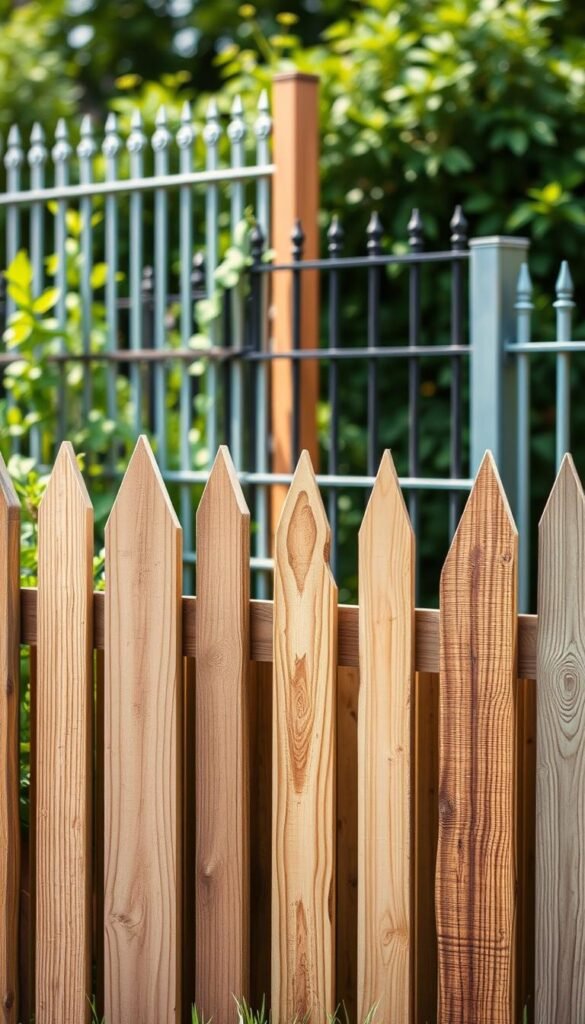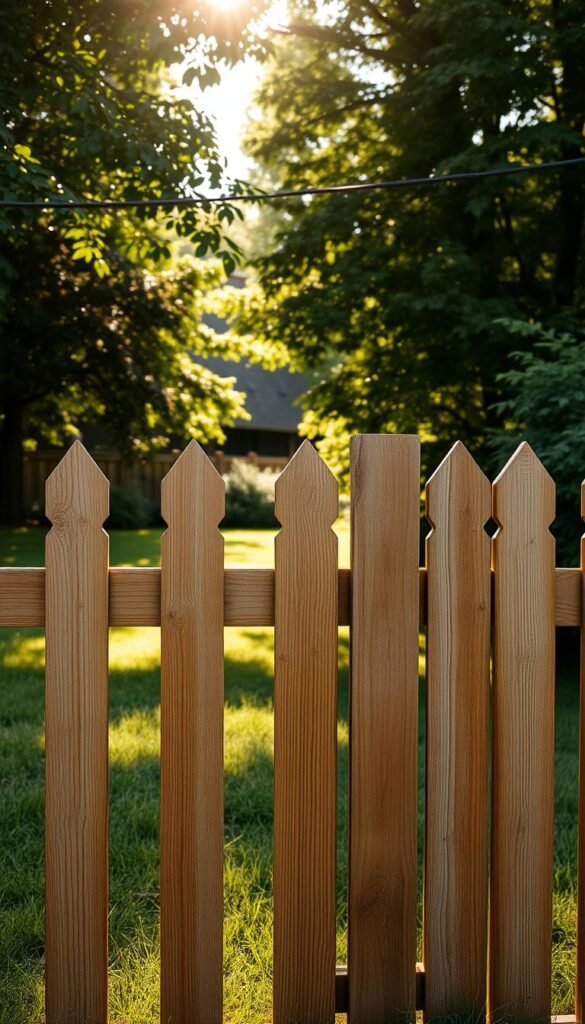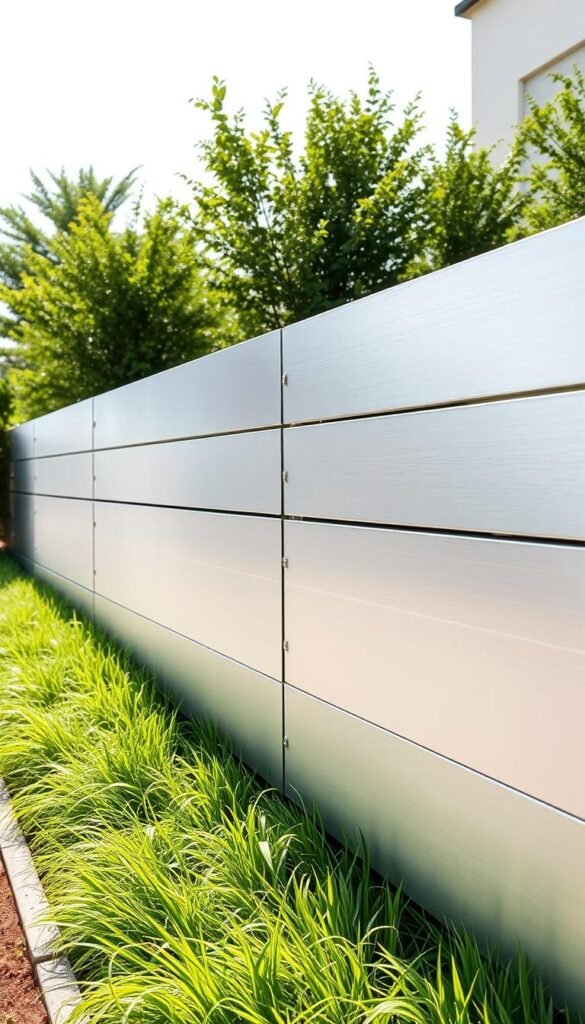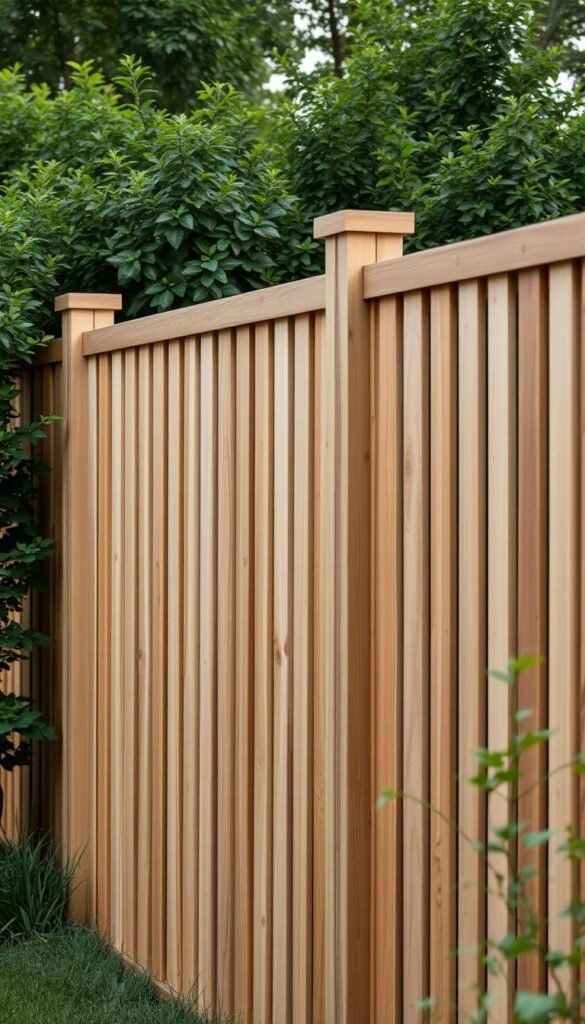Your backyard should feel like a retreat – a place where you can unwind without worrying about prying eyes. Strategic boundary solutions do more than mark property lines; they craft secluded havens that blend security with visual charm. Janice Parker, a Connecticut landscape architect, notes: “A well-designed enclosure fosters connection with nature by offering peace and seclusion.”
These structures serve dual purposes. As Kevin Lenhart of Yardzen explains, they maintain traditional fencing roles while completely screening unwanted sightlines. You’ll discover how the right materials and layouts can transform exposed areas into intimate gathering spots.
This guide helps you navigate options that suit your specific needs. From maximizing small urban lots to enhancing sprawling lawns, we’ll explore how different configurations impact both functionality and curb appeal. You’ll learn why 72% of surveyed homeowners report increased property value after installing quality perimeter features.
We break down practical considerations – from local building codes to maintenance requirements – so you can make confident choices. Whether you prefer modern horizontal slats or classic lattice patterns, your selection should reflect personal taste while meeting practical demands.
Set the Scene: Transform Your Garden Into a Private Oasis

Turning your backyard into a sanctuary starts with smart planning. Thoughtful boundary solutions let you enjoy solitude without sacrificing connection to nature. Landscape designer Jonathan Fargion advises: “Leave two inches at the base – it allows hedgehogs and pollinators to roam while keeping your space secure.”
Embracing Privacy and Style in Your Outdoor Space
Compact urban lots benefit most from vertical screens. Townhouse gardens often use tall wood panels or metal screens from design-forward collections. These options maximize limited square footage while adding architectural interest.
For larger properties, consider mixing fences with greenery. A staggered layout using partial walls and climbing plants maintains airflow and visual depth. This approach works well for homeowners wanting defined zones without a closed-off feel.
How a Creative Fence Can Enhance Your Garden
Modern screens do more than block views. Laser-cut metal patterns cast artistic shadows, while horizontal slats create rhythm. These features turn functional elements into focal points that elevate your landscape design.
| Fence Type | Best For | Wildlife Impact |
|---|---|---|
| Solid Panels | Urban backyards | Moderate (needs clearance) |
| Lattice Top | Suburban gardens | Low (allows movement) |
| Living Walls | Rural properties | Positive (habitat friendly) |
Balance is key. Your outdoor area should feel secluded yet connected. Opt for materials that complement your home’s architecture while letting sunlight filter through. This creates inviting spaces where you’ll want to spend hours relaxing.
Understanding Different Fence Materials for a Custom Look

Your material selection shapes both function and personality. “The right choice acts like a tailored suit – it fits your space perfectly while expressing your style,” notes Joe Carline of Kligerman Architecture & Design. Let’s explore how various options create unique boundaries.
Wood, Metal, and Composite: What to Consider
Cedar remains a top pick for its balance of beauty and practicality. Port Orford and Alaskan Yellow varieties resist rot naturally – perfect for humid climates. You can stain it charcoal gray for modern flair or leave it unfinished for rustic charm.
Composite fencing mixes reclaimed wood fibers with recycled plastics. It skips annual sealing yet mimics grain patterns. While pricier upfront, it lasts decades without splintering – ideal for families with kids or pets.
Metal types offer crisp lines and security. Powder-coated aluminum withstands coastal salt air, while wrought iron brings old-world elegance. Pair horizontal steel slats with climbing roses for industrial-soft contrast.
Eco-friendly and Sustainable Options
Bamboo grows faster than traditional wood, making it a renewable star. Recycled plastic lumber keeps milk jugs out of landfills while blocking wind. For gardeners, combining these with building raised beds creates cohesive eco-conscious spaces.
Consider lifespan and maintenance. Vinyl needs just soapy water but can’t be repainted. Living willow fences require pruning but support pollinators. Your local climate and weekend schedule will guide the smartest pick.
Effective Garden Fence Ideas for Privacy and Style

Wood remains the go-to choice for homeowners seeking warmth and character. Its natural textures create welcoming spaces that age beautifully. Let’s explore how classic designs and modern updates can achieve your desired blend of seclusion and charm.
Classic Wood Fences for Timeless Appeal
The board-on-board style uses overlapping vertical planks to eliminate gaps. Cedar or pine boards alternate positions, creating complete visual barriers. This design excels in tight urban spaces where neighbors sit close.
Shadow box designs add depth with parallel pickets on both sides. Small gaps between boards allow breezes through while maintaining discretion. “It’s like wearing sunglasses – you see out clearly without others peering in,” jokes carpenter Mia Torres.
Traditional picket layouts offer partial screening with personality. Spaced vertical slats work well for front yards wanting curb appeal. Choose pointed tops for cottage vibes or rounded edges for softer looks.
Modern Alternatives with Minimal Maintenance
New materials replicate wood’s warmth without constant upkeep. Composite planks mix recycled fibers with polymers. They resist warping and fading, keeping their rich color for decades.
| Option | Privacy Level | Upkeep Needs |
|---|---|---|
| Natural Wood | High | Annual staining |
| Vinyl Composite | Medium-High | Soap/water |
| Metal-Wood Hybrid | Adjustable | None |
Prefab panels with steel cores offer instant installation. Pair them with climbing vines for organic texture. These hybrids handle harsh weather better than untreated lumber while keeping that rustic feel you love.
Your choice depends on lifestyle. Busy families often prefer composites, while traditionalists lean toward cedar’s authentic grain. Either way, you’ll create a space that feels uniquely yours.
Designing Your Privacy Fence to Balance Security and Aesthetics

Creating a welcoming barrier that safeguards your space doesn’t mean sacrificing style. Smart design choices let you maintain visibility control while keeping your yard feeling airy and connected. Landscape designer Kevin Lenhart puts it simply: “Think of your fence as a filter – it should screen what you don’t want seen while letting nature’s best elements through.”
Incorporating Trellis and Lattice Elements
Lattice tops transform basic barriers into multi-functional features. Adding 12-18 inches of crisscross panels atop a 6-foot base gives extra screening without the boxed-in feel. These open patterns cast playful shadows while supporting climbing roses or jasmine.
Want year-round interest? Pair wooden lattice with evergreen vines like star jasmine. The structure stays visually light but becomes denser as plants grow. You’ll get shifting privacy levels that match the seasons.
Using Height and Gaps to Create an Inviting Look
Six-foot vertical boards block most sightlines from neighboring windows. For added discretion without heaviness, alternate solid panels with narrow gaps. This “peekaboo” effect maintains airflow and sunlight while disrupting direct views.
Consider angling horizontal slats at 45 degrees. The tilted design obscures sightlines from ground level but permits overhead light. It’s like wearing sunglasses – you see out clearly while others get only fragmented glimpses.
Remember: Your fence should frame your garden, not dominate it. Strategic openings and textured materials keep the space feeling curated rather than closed off. The result? A boundary that feels protective but never prison-like.
Innovative Fencing Designs for Modern Outdoor Spaces

Today’s homeowners crave boundaries that make bold statements while serving practical needs. Let’s explore fresh approaches that combine sleek aesthetics with smart functionality for contemporary yards.
Horizontal Fencing for a Contemporary Twist
Rotate traditional slats 90 degrees for instant modern appeal. Horizontal layouts create clean sightlines that make narrow spaces feel wider. Architect Luis Fernandez observes: “These designs act as graphic elements that ground your landscape.”
Customize your setup with:
- Spacing from 0.5″ gaps (full privacy) to 3″ openings (light filtering)
- Mixed material widths like alternating 4″ cedar and 6″ steel slats
- Finish options from matte black powder-coating to natural wood stains
Mixing Materials for Unique Visual Impact
Combine textures for boundaries that command attention. Try these striking pairings:
Wood + Corrugated Metal: Warm cedar planks contrast with galvanized steel’s industrial waves
Concrete + Glass: Sleek transparent panels float between rugged concrete posts
Stone + Steel: Rustic fieldstone bases support crisp horizontal metal rails
These hybrids offer durability while creating depth. Powder-coated aluminum withstands coastal salt spray, while tempered glass maintains visibility in windy areas.
Creative DIY Fencing Projects to Personalize Your Garden
Custom boundaries let you craft outdoor spaces that mirror your personality. With simple tools and creativity, you can build functional art pieces that define your backyard while keeping costs low. Let’s explore hands-on approaches that blend practicality with self-expression.
Step-by-Step Ideas for the DIY Enthusiast
Pallet fences offer instant charm without breaking the bank. Sand down reclaimed boards and arrange them vertically for instant privacy. Leave ½-inch gaps between slats for sunlight, or go seamless for full coverage. Pair with climbing nasturtiums to soften the industrial look.
Try horizontal cedar strips with staggered heights. This project creates rhythmic patterns that make small yards feel wider. Use weather-resistant screws and seal with a dark stain – it hides imperfections while making greenery pop.
Budget-Friendly Projects to Boost Your Curb Appeal
Upcycle old metal gates into decorative screens. Paint them matte black and mount between wooden posts for contrast. Add hanging planters filled with herbs – they’ll thrive while hiding minor flaws in the design.
For quick landscaping upgrades, build a lattice panel using cedar strips. Attach it to existing structures and train jasmine vines across the surface. This living screen evolves yearly, offering changing privacy levels. Discover more budget-friendly gardening solutions to complement your DIY efforts.






